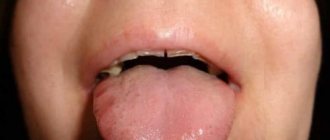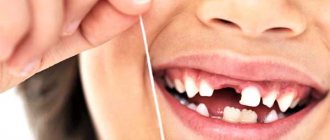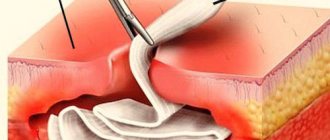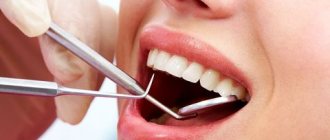What should you do if a small piece of your front, upper, lower or back tooth breaks off? Is it worth resorting to extraction (completely removing the crown) and then installing a prosthesis? Why do strong, hard tissues crack and make your smile unattractive and chewing food painful? In fact, the problem is quite common and can be eliminated in a short time if you consult a dentist in time and do not neglect treatment. In addition, there are preventive measures that, if followed, will help avoid the formation of cracks and chipping.
Reasons for chipping
What causes pieces of teeth to break off (what to do next depends on the provoking factors) most often:
- Traumatic effects on the dentition. This is possible due to a fight, a fall, or an accidental blow.
- Decreased immunity.
- Poor quality installation of orthodontic structures.
- Hormone imbalance. One of the prerequisites is diabetes mellitus and other endocrine diseases.
- Consumption of harmful foods. Caramel candies, nuts, and the simultaneous consumption of hot and cold foods lead to injury.
- Untreated dental pathologies.
- Incorrect positioning of incisors, canines and molars and nocturnal bruxism.
- Damage to caries. This applies to both the initial and later stages.
- Smoking and other bad habits. Alcohol and cigarettes contribute to the thinning of the enamel layer.
- Demineralization, lack of phosphorus, calcium and other essential substances.
- Low acidity in the mouth. An insufficiently balanced diet leads to an imbalance in the acid-base balance.
- Damage to the filling material.
- Presence of cracks on the surface.
- History of chronic diseases.
Treatment
When treating a wedge-shaped tooth defect, the doctor first restores its integrity, then prevents its further destruction. If necessary, dentists of narrow specializations are involved in the treatment of a wedge-shaped defect: therapists, orthodontists, orthopedists.
The following will help restore the condition of the tooth:
- Installation of seals. The doctor removes the altered tissues in the cervical area, and installs filling material in their place. When restoring medium and complex defects, the doctor uses a light-curing fluid composite and compomer materials. They are quite elastic and can partially compensate for the load on the teeth. The best fillings are installed using the sandwich technique: the bottom layer is made of dental cement, the top layer is made of composite materials. For better aesthetics, your doctor may suggest installing ceramic veneers.
- Fluoridation and remineralization. The procedures restore the mineral content in the enamel, this heals the tooth and slows down the process of destruction;
- Prosthetics. If the tooth is severely damaged and there is a risk of fracture at the base of the crown, the doctor will be forced to install a denture. Usually this is permanent prosthetics made of metal-ceramics or using ceramic crowns.
If the wedge-shaped defect has just begun to develop, the following will help slow down the process:
- Remineralizing therapy. Applications with calcium and sodium preparations are applied to the affected part, and the patient is recommended to take a course of vitamin-containing complexes. Remineralization courses must be repeated regularly and they only help at the initial stage of the disease;
- Fluoridation. Effective in cases of deep damage to the enamel, applications with fluoride preparations seal the tubules of the tooth tissue and reduce its sensitivity;
- Laser therapy. Reduces tooth sensitivity and inhibits the development of the disease. Laser treatment is recommended for pregnant and lactating women and patients with allergies.
For home care, the doctor will recommend pastes and gels enriched with a special mineral composition.
Symptoms
Treatment of a small chip on the enamel of a tooth (front or back) should be started as early as possible. If the broken fragment is too small, it may not cause any discomfort, only aesthetic. This does not mean that you should neglect a visit to the doctor, since very soon the problem will grow to much more serious proportions, and therapy will be long and expensive.
Characteristic symptoms:
- visible cracks on the surface;
- loss of filling;
- exposed nerve endings;
- violation of the integrity of the coronal part;
- increased sensitivity to temperature changes;
- pain syndrome, especially at night.
Consequences of injuries
Despite following measures at home, a late visit to the doctor can result in some complications:
- infection of the pulp, development of inflammation, severe pain;
- increased tooth sensitivity;
- root fracture, inflammation of periodontal tissues;
- tooth mobility, high risk of loosening and loss;
- violation of the correct closure of the jaws;
- formation of cysts, granulomas as a result of the inflammatory process.
In order to eliminate dangerous consequences, it is important to take an x-ray. If serious violations are detected, the doctor will prescribe treatment and take measures to prevent consequences.
Types of damage
There are several types of dental injuries with fractures. The classification sign is the depth and degree of injury.
Enamel chip or microcrack
In this case, the integrity of the upper layer of hard tissue is compromised - it cracks, or a small fragment separates. Usually such problems are invisible and do not cause discomfort. These are minor defects that can be quickly treated, but people do not rush to the dentist with them, which is a serious mistake.
What to do if part of a front tooth or a piece of a back tooth chips or falls out? It is important to visit a dental clinic as soon as possible. Damaged structures will become a place for the spread of pathogenic microflora, which will provoke the development of caries and other diseases. In addition, the load when chewing food will increase significantly, so half of the crown may fall off at any moment.
Chip with dentin fracture
Dentists classify this type of damage as moderate. Symptoms may be pronounced or completely absent. If the dentin layer is not restored, the unit will gradually crumble and soon fall apart. In addition, the smile will become unattractive, especially if a piece of an incisor is missing.
Deep fracture to the pulp tissue with exposure of the nerve
This is a severe injury with serious symptoms such as bleeding and severe pain. Even strong painkillers help dull unbearable sensations only for a short time. The crown may be missing half or more. If you are late with medical intervention, the risk of infection, inflammation and other pathological processes that are difficult to treat increases significantly.
Stages of development of a wedge-shaped defect
The wedge-shaped defect develops gradually. The following stages of process development can be distinguished:
- First changes in enamel. A small area at the base of the tooth darkens slightly and loses its shine. Over time, it will develop pigmentation. At this stage, the future defect can only be seen using a special device.
- Superficial lesion. At the base of the tooth there is a noticeable crack, at its widest part not exceeding 3.5 mm. The gums sag, the neck of the tooth is exposed. The patient is uncomfortable with food that is too hot or cold, but the pain quickly goes away.
- Progressive stage. The wedge-shaped defect deepens to 4 mm, becomes yellowish-brown, matte. The shape of the triangle is already clearly visible - the two affected planes of the tooth converge at an angle of 45 degrees. Teeth react painfully to temperature stimuli and acidic foods. It is painful for the patient to brush his teeth. He feels the defect as a kind of step at the base of the tooth, where the remains of soft food are retained. At this stage, the diseased tooth is already noticeable to others when smiling and talking.
- Launched form. The enamel becomes thinner, dentin is affected, and in difficult cases, even the pulp. The wedge deepens to 0.5 cm, the neck of the tooth is exposed. If the destruction reaches the pulp, the neurovascular bundle of the tooth becomes inflamed. Acute paroxysmal pain appears, the tooth reacts to the temperature and taste of food, touch, the chewing process and causes a lot of inconvenience.
What to do if a piece of a tooth breaks off
First of all, you need to visit a dentist. Panic is unacceptable, since the situation is fixable, and at the initial stage it is quickly corrected. A specialist should examine the oral cavity and assess the extent of the problem. If the damage is mild or moderate, it is advisable to carry out treatment in the coming days. If the pulp is exposed, you need to urgently go to the doctor on duty. Otherwise, the patient will not be able to eat, rest, or sleep normally due to unbearable pain.
Relieving symptoms at home
To reduce discomfort and relieve pain, it is necessary to organize pre-medical care. The remaining manipulations will be performed by professional doctors after a visit to the dental clinic. Procedure:
- Rinse your mouth with clean running water.
- To reduce swelling, apply a cold compress to the inflamed area. Apply a sterile bandage if bleeding occurs.
- Take painkillers.
If a piece of a tooth breaks off, the nerve hurts, or the root is split, you should not throw away the fragment of tissue; it is better to show it to a doctor. The fragment may be needed for subsequent restoration.
Emergency assistance before visiting the dentist
Immediately after the incident, urgent measures must be taken. All the steps listed above are mandatory: first, splinters and particles of food are removed by rinsing, then cold is applied to the gums to eliminate inflammation and discomfort, and oral analgesics are used.
Additionally, it is recommended to rinse the mouth with a weak antiseptic solution. To do this, you can use chlorhexidine, furatsilin or any other gentle composition.
Treatment by a doctor
There are several ways to repair a chipped tooth (how it is treated depends on the degree of damage and the presence of pain). Therapeutic intervention options:
- Artistic restoration. Special composites are used. Acceptable when breaking off small fragments.
- Installation of veneers and lumineers. Used for cracks, chips and formation of crevices.
- Recover using tabs. This is how a significant piece of bone tissue is reproduced.
- Prosthetics (crowns). Indicated when most of the dental unit is missing.
Restorative methods in dentistry
The method of restoration depends simultaneously on several factors: the degree of damage, the results of diagnostic studies, general health, medical history and financial capabilities of the patient. The therapeutic regimen is developed on an individual basis. What to do if a front tooth is chipped and why the back teeth are chipped should only be determined by a doctor; self-diagnosis is ineffective.
Remineralization
Remineralization therapy is the simplest recovery option for minor chips. The technique is used for microcracks and other small defects, as well as for preventive purposes to prevent such problems. A special solution with nutrients is applied to the surface, and as a result, the protective properties of the enamel are restored.
Fluoridation
Damaged and healthy teeth are covered with medicinal solutions, gels or varnishes with a large amount of fluoride. Treatment is carried out in stages. This is one of the effective ways to completely restore a chipped front tooth. This method is only beneficial for minor injuries.
Building up
Indicated for moderate injuries. A paste-like mass is applied to the surface in layers, each layer is fixed. The doctor must carefully select materials of the desired shade and texture so that the restored areas remain invisible and do not stand out from the rest.
This method is highly effective and attractively priced. The first thought that arises in most patients when asked what to do if a back tooth is chipped (chipped front teeth are rarely eliminated in this way) is to build up the missing fragment. The technique is in great demand.
Filling and microprosthetics
They are indicated for extensive damage to bone tissue and internal sensitive layers. The doctor carefully examines the results of diagnostic studies (including panoramic and spot images), listens to the patient’s complaints and advises which method is best to use. Restoration is possible using conventional fillings, inlays, veneers, and lumineers. What to do if a back tooth breaks off (the reasons do not matter) and is completely lost? In such a situation, prosthetics using implants or installation of artificial crowns is performed.
The amount that the patient sees in the final settlement after the intervention may be unpleasantly surprising. Before you ignore a small crack in the enamel and neglect a visit to the dentist, it is better to think about possible upcoming expenses.
Hidden caries (both under a filling and on a “healthy” tooth)
As a rule, such caries develops asymptomatically, for more than one month or even a year, it does not manifest itself in any way, but destroys the tooth tissue from the inside. And at some inopportune moment, a part of the tooth, thinned by caries, breaks off.
What to do?
Treat the tooth at the dentist: remove all tissues affected by caries and restore the tooth (with a filling, ceramic inlay or crown, depending on the degree of its destruction). And be sure to check all other teeth for hidden caries!
How to avoid?
See your dentist for preventive examinations more often in order to promptly detect hidden caries at an early stage, when treatment is easier, faster and cheaper.
Special cases
Some injuries require a specific approach, which has its own characteristics against the backdrop of generally established rules. We should look at them in more detail.
Wisdom tooth
"Eights" cannot be restored. The fact is that this makes no sense, because they are not involved in the process of chewing food and are not so important for the functioning of the maxillofacial apparatus. Doctors resort to extraction; subsequent prosthetics are not performed.
Unit
Such damage is the most aesthetically unattractive, because it is visible to others if a person smiles or simply talks. Treatment methods can be any, it all depends on the dentist’s recommendations and the patient’s personal preferences and financial capabilities.
Most often, artistic restoration is used. The specialist selects the composition of the required shade and applies it to the surface. The layer of material is fixed with a special device with light radiation.
What to do if half a tooth breaks off, how will it be treated (a significant fragment has broken off along with dentin)? In this case, veneers are used. This is a reliable method that is durable. Over time, the color of the enamel does not change and remains attractive.
For the most serious damage, crowns made of ceramics, metal-ceramics, and zirconium oxide are installed. The final cost of therapy depends on the choice.
Lateral teeth
They are treated in the same way as the front ones. However, since others cannot see from the outside that there is anything wrong with your smile, ordinary fillings will do. The best option is extension. Overlays are not installed in this case.
If the nerve is damaged, the wound is first treated with an antiseptic. Then depulpation or extraction is carried out followed by prosthetics.
Dairy elements
What to do with a chipped tooth and how to treat it if it hurts? Many parents mistakenly believe that there is no need to correct problems that arise with children’s first incisors, canines and molars - they will fall out sooner or later anyway. This is a big misconception, because the doctor is able to quickly stop further cracking with a filling or a special gel without pain or other unpleasant sensations.
Children are often injured due to falls during active play. If you ignore the treatment of chips, this often leads to stomatitis and increased sensitivity of the dentition.
Procedure:
- calm the baby;
- give him clean water to rinse his mouth;
- disinfect soft tissues if they are damaged;
- save the fragment for the dentist.
No more than 24 hours should pass from the moment of injury to the visit to the dentist. Most likely, the child will be sent for an X-ray. The condition of the permanent one depends on the health of the primary occlusion.
Vertical crack
What should you do if your front tooth chips a little, but the absence of fragments is not visible, only a crack running from top to bottom is noticeable? At first glance, this problem seems insignificant. However, this opinion is erroneous, because most often the pulp is involved. In this case, the enamel layer cannot be restored.
If at first only a small strip is visible on the surface, over time, under constant pressure, it develops into large chips. Timely consultation with a doctor guarantees quick and easy restoration of the dental unit. Otherwise, you cannot do without installing crowns or veneers.
When is implantation needed?
Implantation is required if the root part of the tooth is damaged and cannot be used as a support for a prosthesis. This can happen when the side wall of the tooth is broken (below the gum level), deeply damaged by caries, root fracture, etc. In these cases, the tooth is completely removed and replaced with a titanium rod - an implant. Crowns are also placed on implants. These are metal ceramics and zirconium dioxide; ceramic prostheses are not used due to their high fragility.
Complications after chipping
Restoring a chipped front tooth or a chipped molar (what to do in the case of different types of damage is discussed above) should be mandatory. Firstly, the aesthetic component suffers. A smile looks ugly, a person develops complexes, he is always afraid that others will notice the defect. Secondly, if you neglect medical intervention, you cannot avoid negative consequences (sometimes irreversible). These are problems such as:
- malocclusion;
- curvature of roots;
- increased sensitivity to external stimuli (cold, hot, sour, sweet);
- pulpitis, periodontitis and other diseases.
All of these conditions are considered very serious. Most of them often lead to the loss of units and affect the health of neighboring elements.
Oral diseases affect other organs. For example, if a large piece of a back tooth breaks off and the remaining fragment or the entire row hurts, this can later be associated with diseases of the gastrointestinal tract, heart and blood vessels, and urinary system. Even microcracks can lead to such complications. Thus, unpleasant consequences can only be avoided with the help of timely intervention by a dentist.
Prevention
To prevent chipping of hard tissues, you must adhere to the following rules:
- do not neglect daily cleaning and other hygiene procedures;
- visit the dental clinic every six months for preventive examinations;
- promptly treat caries and other diseases;
- adhere to a proper balanced diet;
- lead a healthy lifestyle, eliminate bad habits;
- if the bite is broken, take measures to correct it;
- minimize the risks of traumatic effects (too hard food is one of the main reasons why a piece of a back tooth breaks off, an incisor or a fang breaks off);
- periodically resort to professional cleaning to remove plaque and stone;
- consult a doctor even if microcracks appear that are not accompanied by unpleasant symptoms.
The dentition is a vulnerable place, especially if you neglect hygiene rules, often chew caramel, smoke, ignore oral diseases and make other mistakes. Chips of the enamel and deeper tissues often lead to serious complications if restoration is not started in time. Before determining what to do if a piece falls off or half of a tooth breaks off, the doctor must determine the extent of the damage and decide whether it is possible to restore the dental unit without resorting to the last resort - extraction.
Occurrence of a vertical crack
Sometimes a chip does not appear, but the tooth cracks vertically - this is very noticeable from the outside. The choice of treatment method will be based on how severely the enamel is damaged and how deep the crack goes.
There are three main treatment options:
- Standard filling.
- Installation of external onlays on the tooth.
- Removal and subsequent implantation.
It is important to resolve the problem quickly before numerous potential complications arise.











